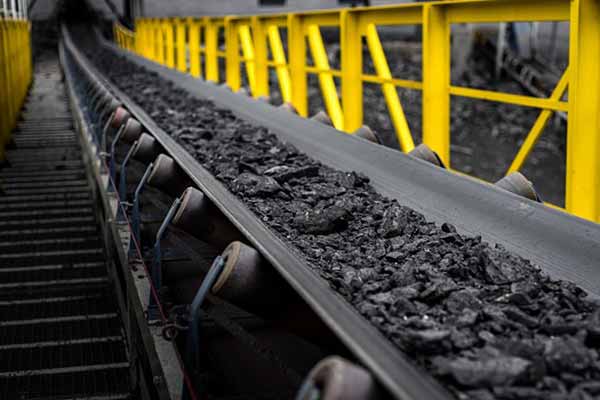The rising price of fossil fuels within an increasingly volatile energy market means it may be cheaper for countries to skip using natural gas as a “transition” fuel and switch directly to renewable energy sources, report finds.
TransitionZero, a climate analytics not-for-profit organization, worked out the carbon cost of switching from coal to renewables like solar and wind power, what it calls C3PI. It compared prices associated with operating existing coal-fired power plants with new onshore wind or solar photovoltaics (PV) plus battery storage.
The higher the C3PI, the more it costs a country to continue using coal rather than switching to renewables or natural gas.
In 2022, the price of switching from coal to natural gas has averaged $235 per ton of carbon dioxide emissions. Coal-to-renewable switching came in at $62 per ton of carbon dioxide emissions — down 99% from clean energy’s C3PI cost in 2010.
As a result, TransitionZero suggests countries skip the natural gas transition phase and move straight to adding renewable energy capacity, saving carbon emissions and money.
Why Is Natural Gas Part of the Transition to Renewables?
Natural gas has been heralded as a “cleaner” way for coal-dependent countries to reduce their carbon emissions while switching their infrastructure to green energy sources.
Natural gas plants use similar infrastructure to coal-fired power stations and can be built quickly. However, natural gas has a lower carbon intensity. It releases fewer emissions than coal, per unit of energy produced, leading industry players to herald natural gas as a “clean” and cheaper transition fuel to use while countries build renewable installations.
But recent spikes in coal, oil, and natural gas prices, caused partly by the Ukraine crisis, coupled with a dramatic drop in the cost of installing utility-scale renewable energy, have reversed that logic.
As recently as February, the European Union was berated for planning to include natural gas as a “green” investment. New natural gas plants can get approval if they switch to low-carbon gasses or renewables by 2035 — but now it may not be economically viable with a direct switch to renewables offering better value.
Cheap Coal Complicates the Energy Picture
Coal is enjoying a mini-revival as natural gas prices soar. In 2020, nearly 70% of worldwide electricity generation came from unabated coal and fossil gas.
In 2021, coal-powered energy generation leaped by 16% compared to 2020, according to the U.S. Environmental Protection Agency (EPA).
There are more than 2,400 working coal-fired power plants across 79 countries globally, with a further 189 plants under construction. The majority of new coal capacity (55%) comes from China. Emissions from recently retired coal plants are being replaced by new ones coming online.
That comes despite nearly 200 countries agreeing to try to limit global temperature rises to 1.5 degrees Celsius (2.7 degrees Fahrenheit) by 2050. Almost 90% of the world’s governments have set a zero-emissions target for the same date, including the United States.
Experts think coal use needs to fall 75% by 2030 to have a realistic chance of limiting global warming to 1.5 degrees Celsius by 2050.
Which Countries Benefit Most From Renewables Switch?
According to the latest figures, Japan has one of the highest coal-to-clean costs (C3PI) at $59 per ton of carbon dioxide produced. China and the United States, world leaders in renewable energy creation, have a C3PI price of $11 and $50, respectively, partly because low domestic coal prices keep the gap smaller.
The United Kingdom and European Union countries are best positioned to replace coal with renewables, with no carbon cost in switching from coal to clean.
Indonesia has the highest C3PI price at $102 per ton to change to renewables. Indonesia’s economy is heavily dependent on coal. The country is the world’s largest exporter of thermal coal and the eighth-biggest carbon emitter.
Indonesia consumes about 130 million tons of coal each year and exports around triple that amount. Some 60% of its 73-gigawatt (GW) electricity capacity is from coal-powered plants.
Do All Roads Point to Renewables?
There are many power plants proposed or under construction globally, with 442 GW of coal-produced electricity and 615 GW of natural gas capacity mooted. Global energy markets have shown to be susceptible to geopolitical swings. In contrast, renewable energy like solar, wind, and hydropower, is most likely to be produced and used domestically.
The TransitionZero authors concluded that: “Zero-carbon technologies are not immune to supply chain gyrations, but they are unlikely to suffer from the same volatility as fossil fuels because they have near-zero marginal costs. For this reason, these technologies need to be at the heart of supply-side strategies to reduce the impact of the energy crisis.”
Renewables are perhaps moving from an environmentally desirable to an economically vital era, with profound repercussions for global greenhouse gas emissions and energy chains. Even “lighter” fossil fuels like natural gas may not be able to compete with the wind and solar revolution.
Opinion writer: Tom Shearman
The opinions, beliefs, and viewpoints expressed by the various authors do not necessarily reflect the opinions, beliefs, or viewpoints of Interactive Energy Group, LLC (IEG) or its parent companies or affiliates and may have been created by a third party contracted by IEG. Any content provided by the bloggers or authors are of their opinion and are not intended to malign any individual, organization, company, group, or anyone or anything.
Brought to you by energysavings.com
All images licensed from Adobe Stock.
Featured Image

